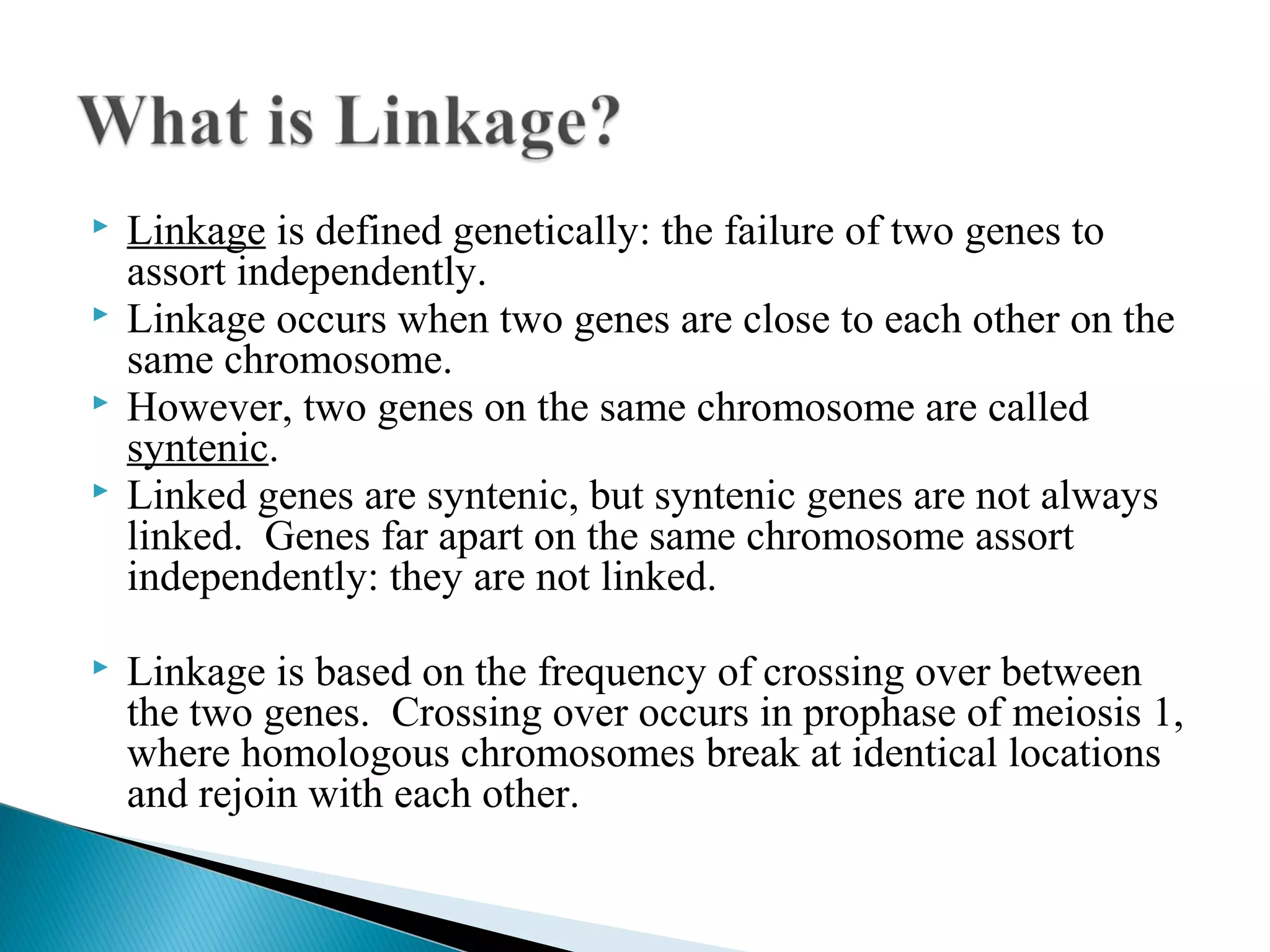This document discusses genetic linkage, detailing how genes located close together on the same chromosome fail to assort independently. It outlines the concept of recombination during meiosis, methods for testing gene linkage through test crosses, and the establishment of gene maps to assess gene distances based on recombination rates. Additionally, it covers complications such as double crossovers and interference in genetic mapping, providing an overview of methodologies and experimental findings related to gene linkage.



































